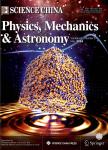Identification of Lagrangian coherent structures in the turbulent boundary layer
Identification of Lagrangian coherent structures in the turbulent boundary layer作者机构:Institute of Fluid MechanicsBeijing University of Aeronautics and AstronauticsBeijing 100083China
出 版 物:《Science China(Physics,Mechanics & Astronomy)》 (中国科学:物理学、力学、天文学(英文版))
年 卷 期:2009年第52卷第2期
页 面:248-257页
核心收录:
学科分类:080704[工学-流体机械及工程] 080103[工学-流体力学] 08[工学] 0807[工学-动力工程及工程热物理] 0805[工学-材料科学与工程(可授工学、理学学位)] 0704[理学-天文学] 0801[工学-力学(可授工学、理学学位)]
基 金:Supported by the National Natural Science Foundation of China (Grant Nos. 10425207 and 10832001)
主 题:turbulent boundary layer coherent structures vortex identification scheme finite-time Lyapunov exponents hairpin-like vortices
摘 要:Using Finite-Time Lyapunov Exponents (FTLE) method, Lagrangian coherent structures (LCSs) in a fully developed flat-plate turbulent boundary layer are successfully identified from a two-dimensional (2D) velocity field obtained by time-resolved 2D PIV measurement. The typical LCSs in the turbulent boundary layer are hairpin-like structures, which are characterized as legs of quasi-streamwise vor- tices extending deep into the near wall region with an inclination angle θ to the wall, and heads of the transverse vortex tube located in the outer region. Statistical analysis on the characteristic shape of typical LCS reveals that the probability density distribution of θ accords well with t-distribution in the near wall region, but presents a bimodal distribution with two peaks in the outer region, corresponding to the hairpin head and the hairpin neck, respectively. Spatial correlation analysis of FTLE field is im- plemented to get the ensemble-averaged inclination angle θ R of typical LCS. θ R first increases and then decreases along the wall-normal direction, similar to that of the mean value of θ. Moreover, the most probable value of θ saturates at y+=100 with the maximum value of about 24°, suggesting that the most likely position where hairpins transit from the neck to the head is located around y+=100. The ensem- ble-averaged convection velocity Uc of typical LCS is finally calculated from temporal-spatial correla- tion analysis of FTLE field. It is found that the wall-normal profile of the convection velocity Uc(y) ac- cords well with the local mean velocity profile U(y) beyond the buffer layer, evidencing that the down- stream convection of hairpins determines the transportation properties of the turbulent boundary layer in the log-region and beyond.



